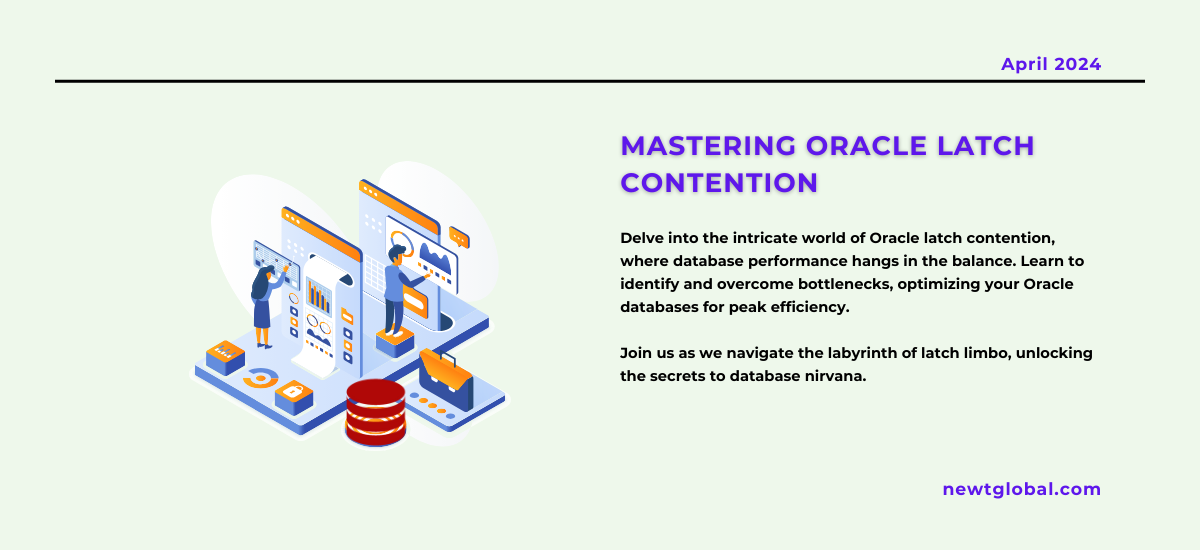
In the world of managing Oracle databases, speed is crucial. However, there’s a problem called latch contention that slows things down. Latch contention happens when different parts of the database fight for the same resources, causing delays and making the database less efficient. Let’s dive into the details and learn how to solve this problem.
What is Latch Contention?
Imagine latch contention as a big fight within your database. Different parts of the database are struggling to get access to important resources. This struggle creates traffic jams and slows down the whole system.
Who Causes the Trouble?
There are a few main areas where latch contention causes trouble:
-
- Cache Buffer Chains Latch: This part of the database fights over storage space, especially for frequently used data. It’s like a traffic jam in a busy area.
- Library Cache Latch: Here, the battle is over shared pieces of code used by different programs. It’s similar to many people trying to read the same book at once.
- Redo Log Buffer Latch: This area manages important records of changes in the database. When too many changes happen too quickly, it’s like a storm hitting this part of the database.
How Do We Fix It?
To solve these problems, we need to find out exactly where they’re happening. We can use Oracle’s tools to help us see where the traffic jams are:
-
- AWR Reports: These reports give us a detailed look at what’s happening inside the database.
- Views: Monitor real-time data with views like V$LATCH, V$LATCHHOLDER, and V$SESSION_WAIT.
- Oracle Enterprise Manager (OEM): This is a more user-friendly way to check on the database’s health.
Making Things Efficient
Fixing latch contention is a bit like magic—turning big problems into opportunities to make things run better.
-
- Cursor Sharing Solutions: This approach makes it easier for the database to handle repeated requests, which keeps things running smoothly.
- Tuning Parameters: Adjust settings like CURSOR_SHARING, DB_CACHE_SIZE, and LOG_BUFFER to match the workload.
- Changing the Architecture: Sometimes, we need to rethink how the database is set up to spread out the workload better.
- Regular Check-Ups: Keep checking the database’s health to catch and fix small problems before they get bigger.
The Final Push
By following these steps and using the right tools, you can improve your Oracle database’s performance. It’s all about being aware of what’s happening, analyzing problems, and making smart changes. So, let’s break free from latch contention and make our database perform at its best!
Ready to take your Oracle databases to new heights of performance?
Join us on a journey where we’ll help you solve a common problem called latch contention, which can slow down your databases. Our team knows all about this issue and has the tools to fix it, making sure your databases run smoothly and efficiently.
You can get in touch with us by emailing marketing@newtglobalcorp.com or visiting our website at newtglobal.com. We have a great product called Newt Global DMAP that can help move your Oracle databases to a better system called cloud-native PostgreSQL. It’s faster, it works better, and it’s cheaper too!
Don’t let latch contention keep your databases from performing their best. Contact us today and let’s make your databases shine!
